Introduction
Thinking about changing your floors but not sure where to start? You’re not alone. With so many flooring types available today, it can be hard to know which one is right for your home. In this guide, we’ll make things simple. We’ll go over the best flooring options for UK homes in 2025, from classic wood and cosy carpets to modern vinyl and low-maintenance laminate. Each type has its own pros and cons, and some work better in certain rooms than others.
Whether you’re updating a single room or planning a full home renovation, this article will help you understand your flooring options so you can choose what fits your style, budget, and day-to-day needs. Let’s take a look at the most popular types of flooring and find the right one for your home.
What is Flooring?
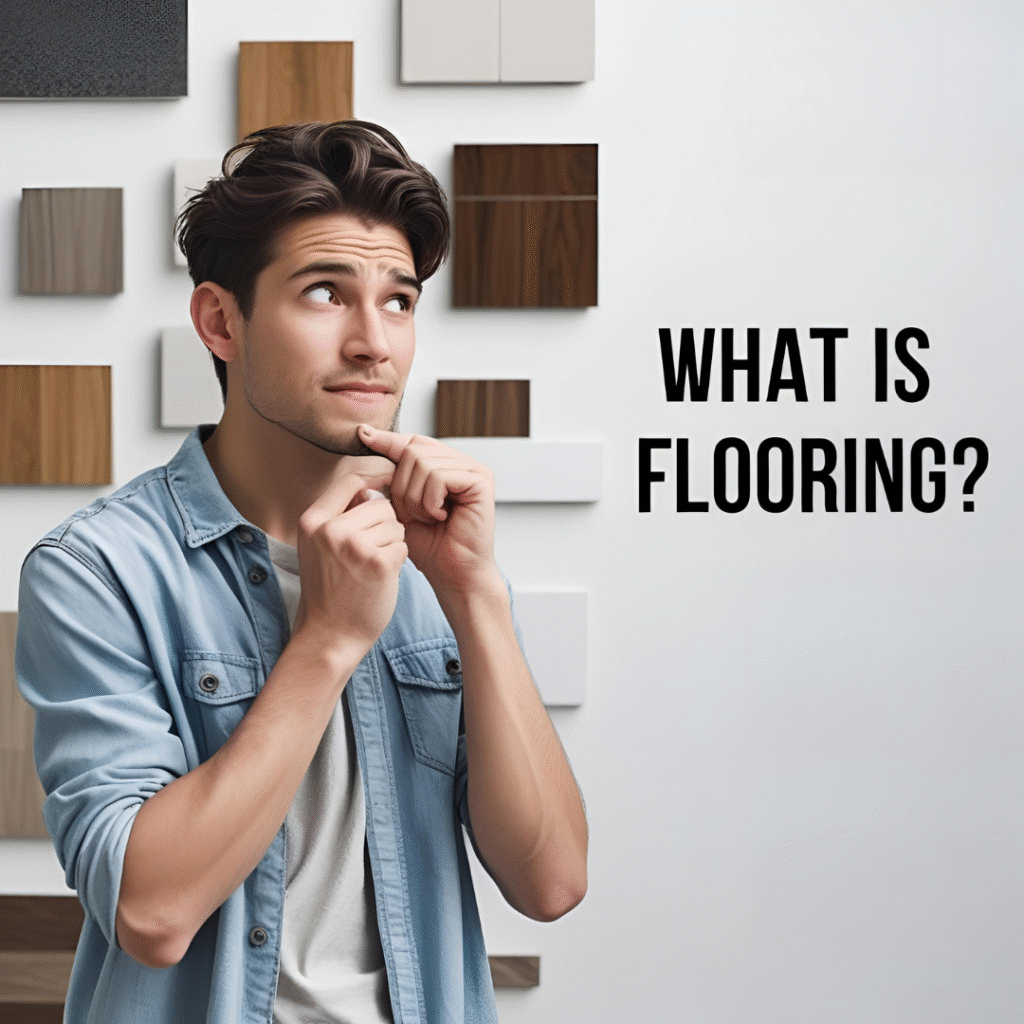
Flooring is the surface you walk on in your home. It’s what covers the base layer (called the subfloor) and gives each room its look and feel. Whether it’s laminate , vinyl , tile , carpet , or wood , your choice of flooring affects more than just style — it also impacts comfort , cleaning , and durability.
There are many flooring types available, and each one suits different rooms and lifestyles. For example, some are great for busy homes with kids, while others work best in quiet bedrooms or luxury spaces.
Choosing the right flooring matters because it can change how a space looks, how easy it is to maintain, and even how long it lasts. In this guide, we’ll explore the best flooring options in the UK and help you pick the one that’s right for your home.
Why Choosing the Right Flooring Matters
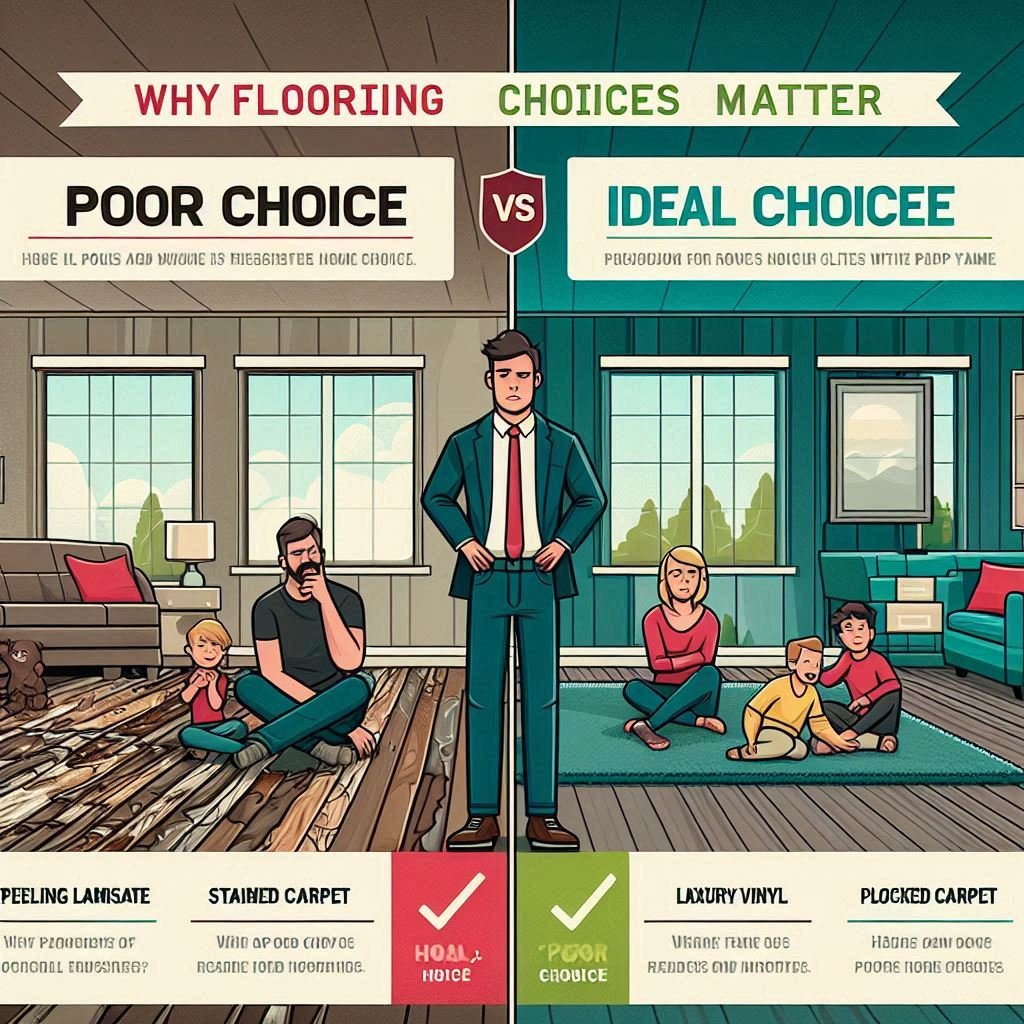
When it comes to home improvement, flooring is one of the most important decisions you’ll make. The right choice doesn’t just improve how your home looks — it affects how it feels, how easy it is to clean, and how long it lasts.
Different flooring types work better in different areas. For example, you wouldn’t want carpet in a kitchen, or slippery tiles in a hallway where kids run around. That’s why picking the right flooring for each room really matters.
It also plays a big role in your budget, maintenance needs, and even your home’s value if you plan to sell. Choosing the wrong one can lead to regrets — like floors that scratch easily, trap dirt, or wear out too quickly.
Whether you’re after a warm, cosy feel, a modern look, or a durable surface that handles everyday life, the flooring you choose will have a long-term impact. In this guide, we’ll help you find the best flooring options for your lifestyle, space, and budget.
Main Flooring Types: Pros, Cons & Best Uses (UK Homes)
When choosing the best flooring for your home, it helps to understand the main types available in the UK. Each type has its own strengths and suits different rooms and lifestyles. Here’s a simple breakdown to guide you.
Laminate Flooring
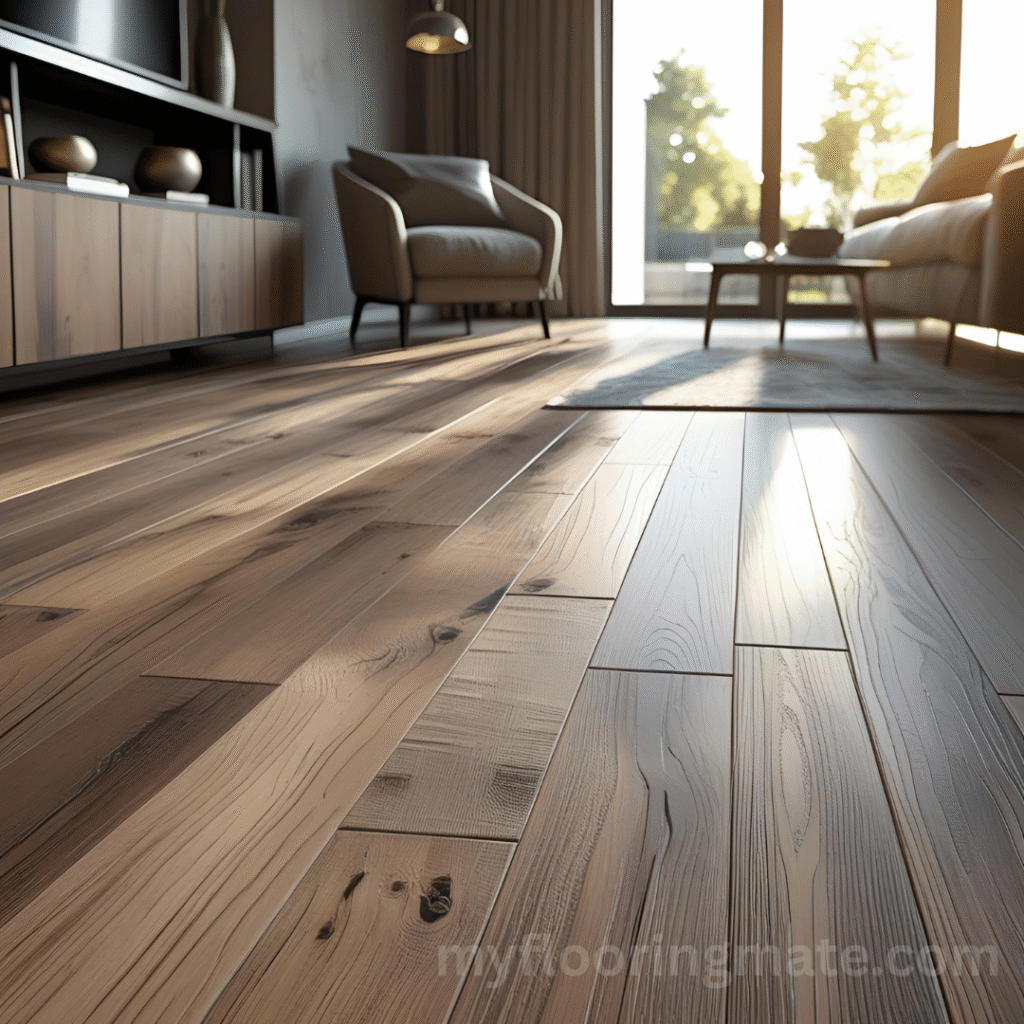
If you want a stylish floor that looks like real wood but doesn’t cost a fortune, laminate flooring is a great option. It’s tough and scratch-resistant, making it perfect for busy living rooms, hallways, or family rooms where foot traffic is high. Laminate is easy to clean too, but it’s important to avoid wet areas like bathrooms or kitchens since water can damage it.
Vinyl Flooring
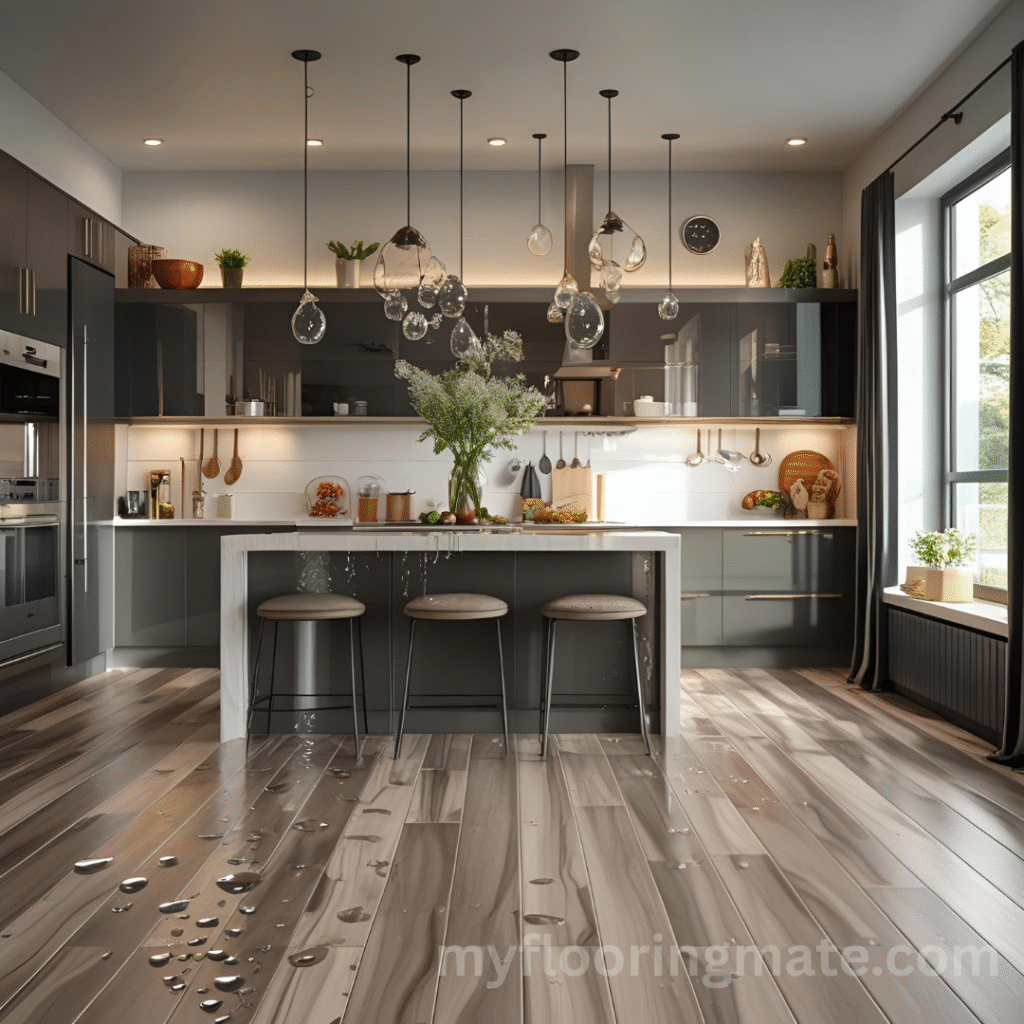
Vinyl flooring has grown popular, especially for kitchens and bathrooms, because it’s waterproof and very easy to maintain. Luxury Vinyl Tiles (LVT) can mimic wood or stone, giving you a modern look without the hassle. It’s softer underfoot compared to laminate and handles spills well, which is ideal for homes with kids or pets. Just keep in mind cheaper vinyl might dent or look less natural.
Hardwood Flooring
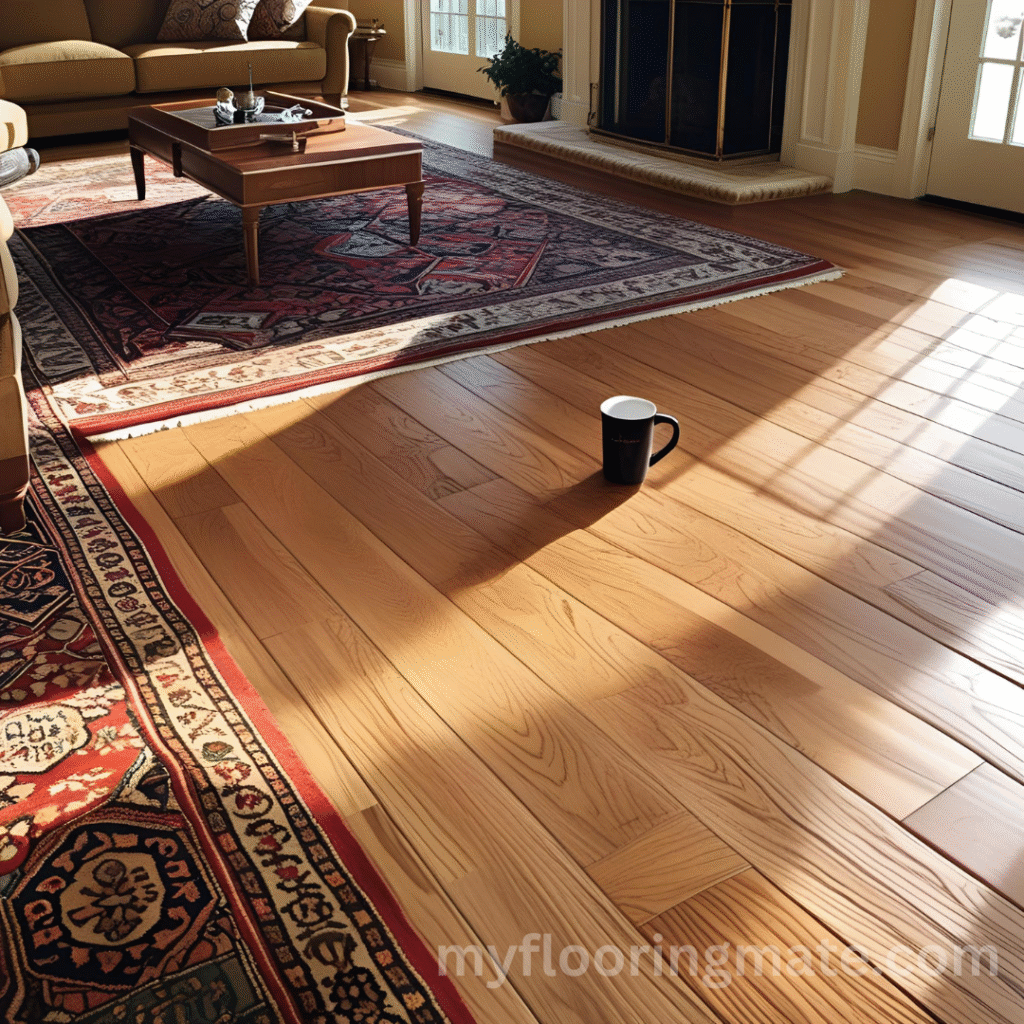
For a classic, warm feel, nothing beats hardwood flooring. It adds real value to UK homes and can last for decades if looked after properly. Solid wood is beautiful but best for dry rooms like bedrooms and lounges, while engineered hardwood offers better stability in rooms with moisture changes. Hardwood floors bring timeless charm but usually come with a higher price tag.
Carpet Flooring
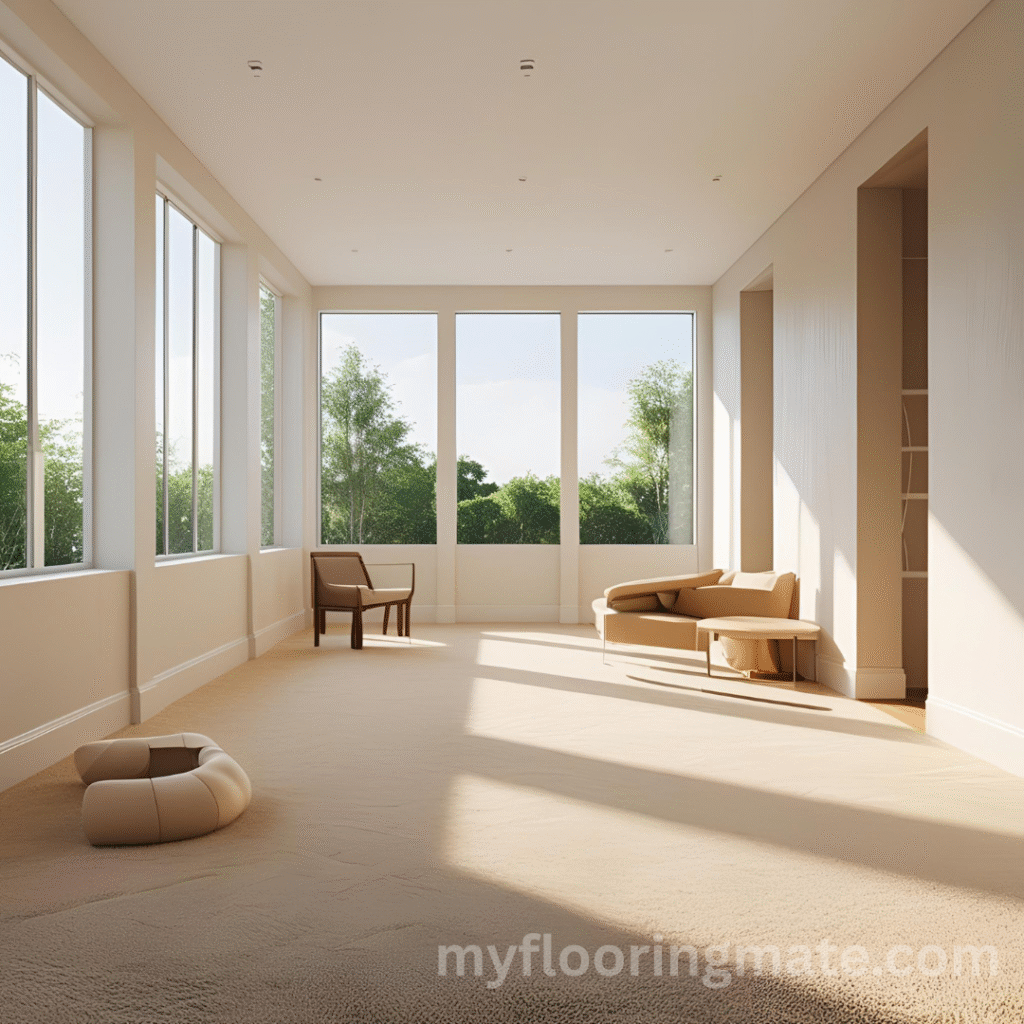
Carpet flooring adds warmth and comfort, making it a favourite in bedrooms and living areas. It’s soft underfoot and helps reduce noise — perfect for families or those wanting a cosy feel. However, carpets can stain easily and need regular cleaning. They’re best suited for low-moisture areas where comfort is a priority.
Tile Flooring
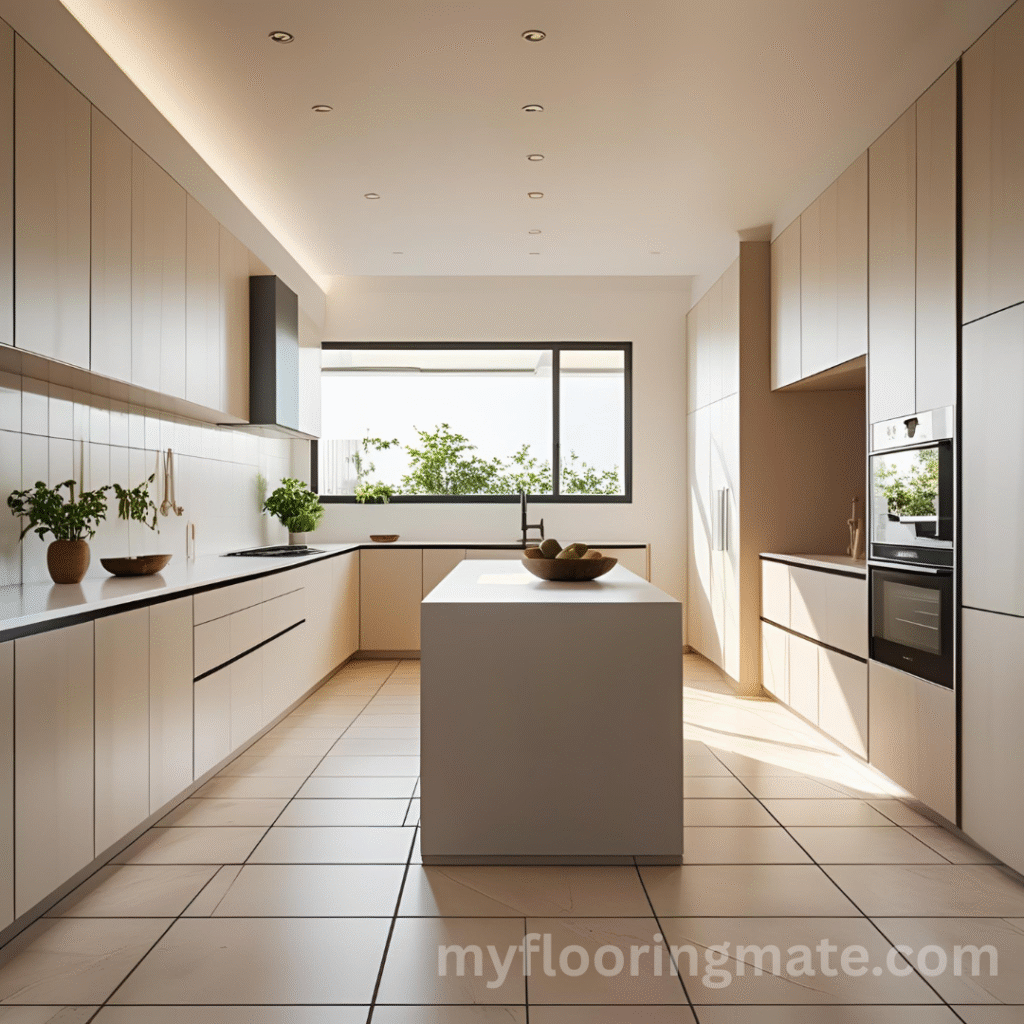
Tile flooring is a durable and water-resistant choice, ideal for bathrooms, kitchens, and utility rooms. Porcelain and ceramic tiles are popular in UK homes because they’re easy to clean and come in a wide range of styles. Tiles can feel cold underfoot, so pairing them with underfloor heating can make your space more comfortable.
Luxury Flooring

Luxury flooring, such as parquet wood or natural stone, offers an elegant look that can transform any room. These materials are often found in high-end homes and add a sense of sophistication. While they look stunning, luxury floors typically require more care and come with a higher price tag.
Eco-Friendly Flooring
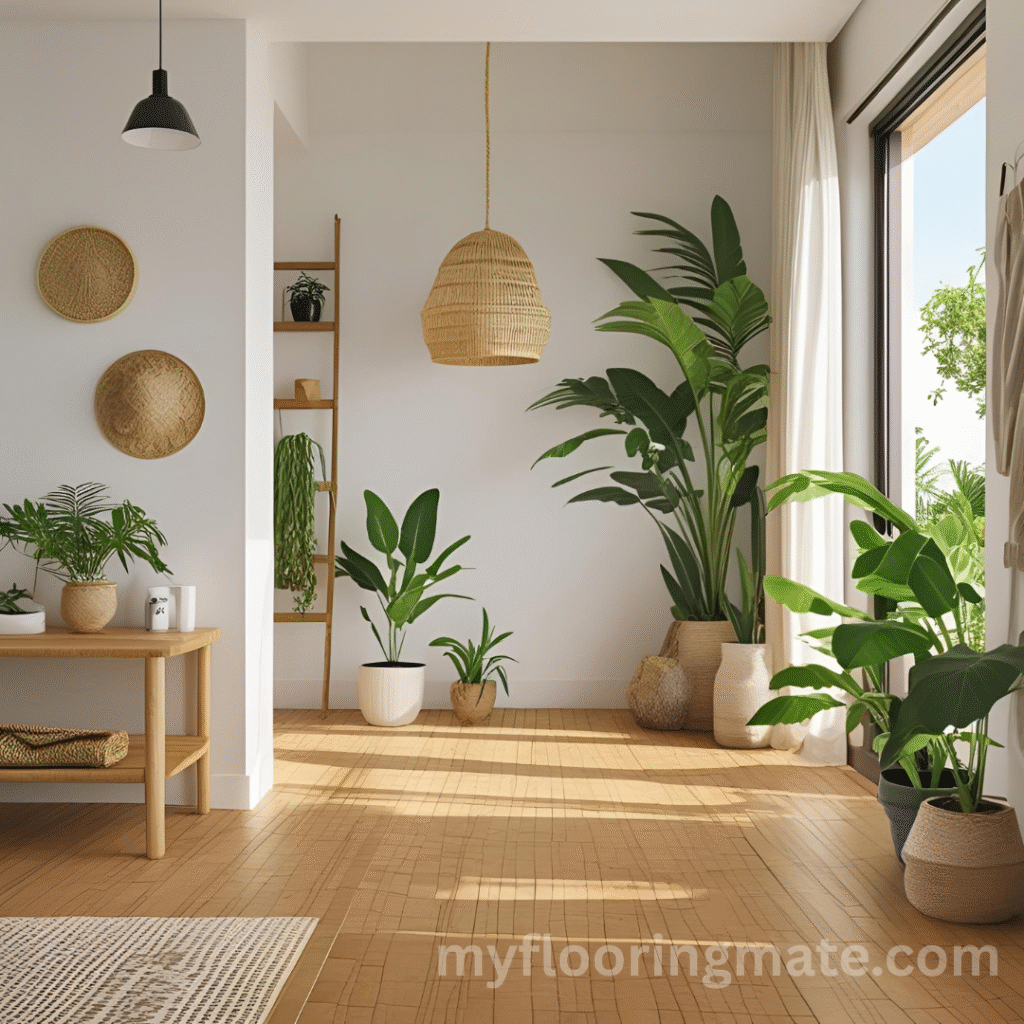
If you’re looking for a sustainable choice, there are some great eco-friendly flooring options available in the UK. Bamboo flooring is one of the most popular — it’s a fast-growing, renewable material that looks similar to wood but is more environmentally friendly. It’s strong, stylish, and works well in living rooms and bedrooms. Cork flooring is another natural option, offering comfort underfoot and good sound insulation. For something with more character, reclaimed wood flooring gives old timber a second life. These floors are ideal if you want to reduce your environmental impact without giving up on style or quality.
Other Flooring Options to Know About
Besides the main types we’ve covered, there are a few other flooring options worth knowing — especially if you’re looking for something a bit different. SPC flooring (stone plastic composite) is a tough, waterproof choice that works well in busy areas and rental homes. Linoleum flooring, often confused with vinyl, is made from natural materials and is great if you want an eco-friendly flooring option. For modern homes, some people choose polished concrete floors, which give a clean, industrial look. And if you need something durable for a home gym, garage, or playroom, rubber flooring could be a smart choice. It’s slip-resistant, absorbs impact, and handles moisture well. In the UK, rubber floor tiles are often used in utility rooms or fitness spaces where comfort and safety matter. It’s not usually used in living areas, but it’s a great functional option for certain parts of the home.. These types aren’t as common but can be perfect depending on your space and needs.
Comparison Table of Flooring Types (UK Guide 2025)
Here’s a quick side-by-side look at the most common flooring types in UK homes. This table helps you compare their key features — like where they work best, how durable they are, and how easy they are to maintain.
| Flooring Type | Best For | Water Resistance | Durability | Ease of Maintenance | Cost Range |
| Laminate | Living rooms, bedrooms, hallways | 🚫 No | ✅ High | ✅ Easy | 💷 Budget-friendly |
| Vinyl (LVT & Sheet) | Kitchens, bathrooms, utility rooms | ✅ Yes | ✅ High | ✅ Very easy | 💷 Budget to mid |
| Hardwood | Living rooms, dining rooms, bedrooms | 🚫 Low | ✅ Long-lasting | 🔁 Needs care | 💷 Mid to high |
| Carpet | Bedrooms, lounges, staircases | 🚫 No | ⚠️ Moderate | 🔁 Needs regular vacuum | 💷 Budget to mid |
| Tile (Porcelain/Ceramic) | Bathrooms, kitchens, entranceways | ✅ Yes | ✅ Very durable | ✅ Easy | 💷 Mid to high |
| Luxury (Parquet, Marble) | Dining rooms, feature spaces | 🚫 Low to moderate | ✅ Durable with care | 🔁 Maintenance varies | 💷 High-end |
| Eco-Friendly (Bamboo, Cork) | Bedrooms, living rooms | ⚠️ Varies | ✅ Good | ✅ Generally easy | 💷 Mid-range |
| Rubber | Home gyms, playrooms, utility spaces | ✅ Yes | ✅ Very tough | ✅ Very easy | 💷 Budget to mid |
| Concrete (modern) | Contemporary interiors, open-plan spaces | ✅ Yes | ✅ Long-lasting | ✅ Low maintenance | 💷 Mid to high |
Best Flooring Options by Room (UK Homes 2025)
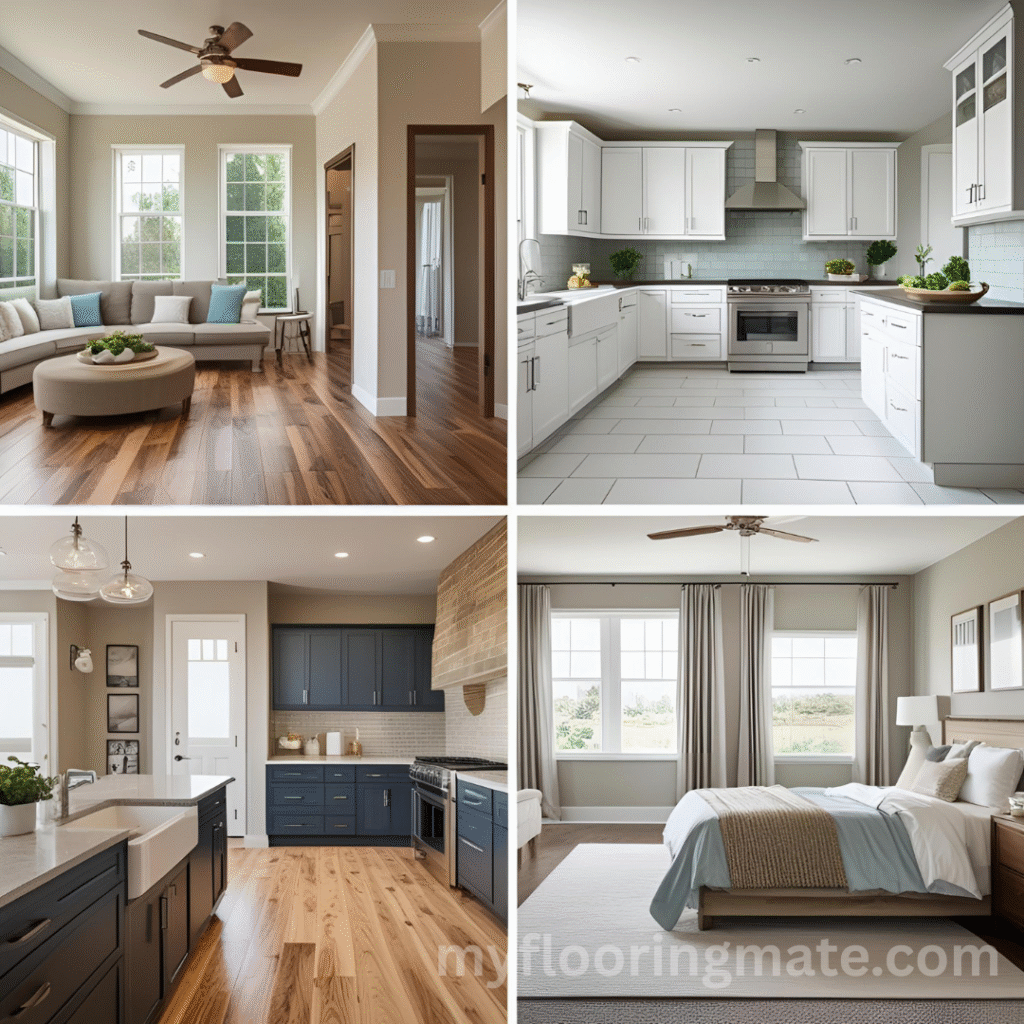
Different rooms need different types of flooring because of how they’re used and the conditions they face. Choosing the right floor for each space helps your home look great and stay functional for years.
Best Flooring for Living Rooms
In living rooms, many homeowners in the UK prefer laminate flooring because it’s durable and budget-friendly while offering a wood-like appearance. If comfort and warmth are your priorities, carpet remains popular for soft underfoot feel and noise reduction. For a more upscale, timeless look, engineered hardwood adds elegance and value.
Best Flooring for Kitchens
Kitchens demand floors that can resist water and stains. That’s why vinyl flooring, especially Luxury Vinyl Tiles (LVT), is commonly chosen—it handles spills well and cleans up easily. Porcelain tiles are also popular for their durability and classic style, making them a smart choice in busy cooking areas. learn more in detail about Best flooring for kitchens here.
Best Flooring for Bathrooms
Because bathrooms are wet and humid, floors need to be completely waterproof. Vinyl, ceramic tiles, and rubber flooring all stand up well to moisture without warping or damage, keeping your bathroom safe and stylish.
Best Flooring for Bedrooms
Bedrooms call for cosy and inviting floors. Soft carpet helps create a warm atmosphere and cuts down noise, while laminate or engineered wood offer a cleaner look with the option to add rugs for extra comfort.
Best Flooring for Hallways & Entryways
Hallways see a lot of foot traffic and dirt, so hard-wearing floors are essential. Many choose laminate, vinyl, or tiles here because they’re easy to clean and resist scratches. Softer materials like carpet can wear out quickly in these busy spots.
Best Flooring for Home Gyms or Utility Rooms
In practical spaces like gyms or utility rooms, rubber flooring is a popular choice because it’s slip-resistant and absorbs impact well. Vinyl tiles also work, offering durability and easy maintenance in these high-use areas.
Maintenance and Durability Tips for Flooring
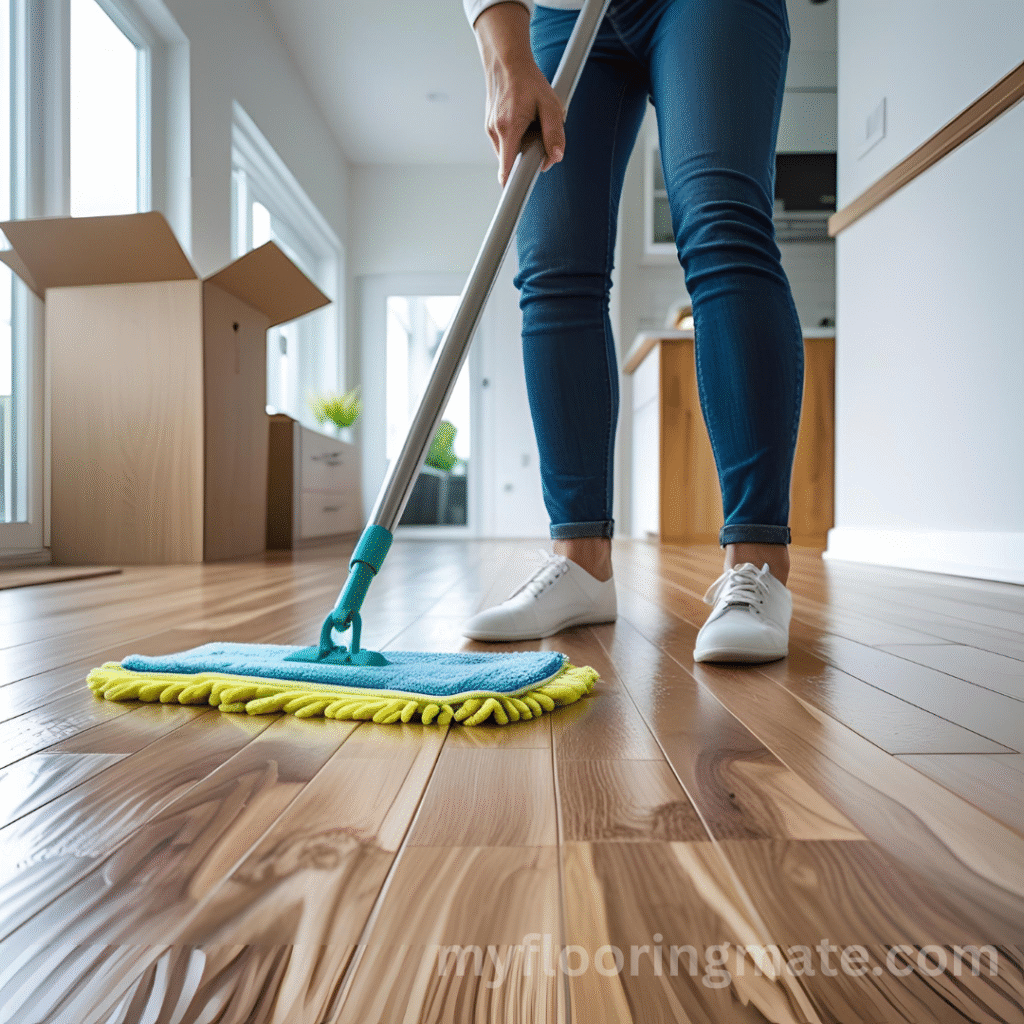
Keeping your floors looking great doesn’t have to be a chore. With the right care, your flooring will stay strong and beautiful for years.
For laminate and hardwood, the secret is simple: keep dirt and grit off. Sweep or vacuum regularly to stop scratches before they happen. When cleaning, use a damp mop and a gentle cleaner made for wood or laminate — but never soak your floors. Too much water can cause warping and damage.
Vinyl and tile floors are tougher when it comes to spills and stains. They love a good mop now and then with a mild cleaner. Just avoid abrasive scrubbing, which can dull their shine. Wipe up spills quickly to keep your floors looking fresh.
If you have carpet, vacuum often to keep dirt from settling deep into the fibres. Got a spill? Tackle it fast before it becomes a stubborn stain. And every once in a while, call in the pros for a deep clean to refresh your carpet’s life.
Furniture can be sneaky—those chair legs and heavy sofas can leave marks. Protect your floors by adding felt pads under furniture feet and place mats at your door to catch dirt and moisture before it spreads.
Lastly, keep an eye on moisture. Too much dampness can ruin wood and laminate floors. Good ventilation or a dehumidifier in places like kitchens and bathrooms can make all the difference. Follow these simple steps and your floors will stay looking their best, making your home feel welcoming and well cared for.
Flooring Costs — What to Expect in the UK (2025)
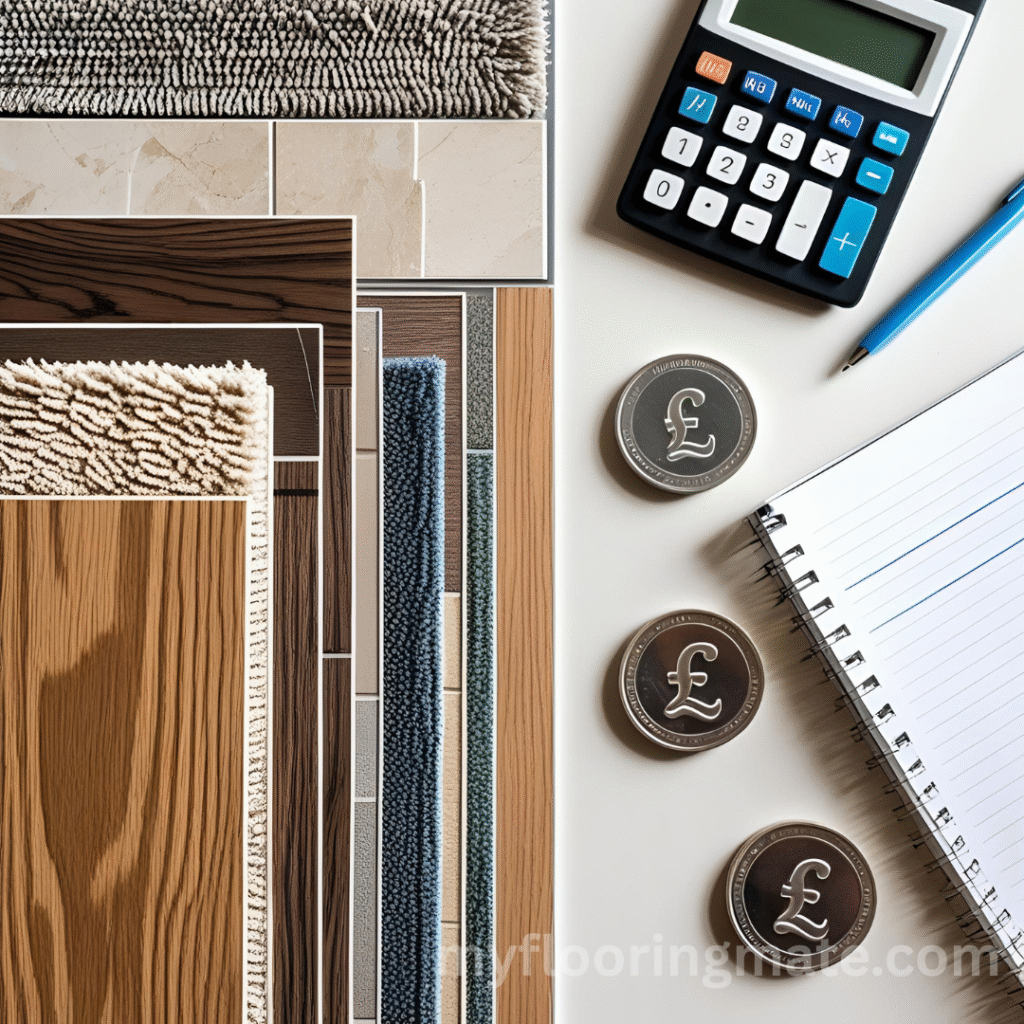
When planning your flooring budget, understanding the typical costs can make the process easier. Here’s a clear breakdown of popular flooring types with average price ranges in the UK, including installation considerations.
Laminate Flooring
A budget-friendly choice, laminate typically costs between **£10 and £25 per square metre**. It’s easy to install and works well in living rooms, bedrooms, and hallways.
Vinyl Flooring (Including LVT)
Known for being waterproof and low maintenance, vinyl ranges from **£20 to £40 per square metre**. It’s ideal for kitchens, bathrooms, and utility spaces.
Hardwood Flooring
Classic and durable, hardwood can range from **£40 to £80 per square metre**, depending on the wood and finish. Engineered hardwood offers a slightly more affordable option with good moisture resistance.
Carpet
Prices vary widely, but expect around **£10 to £35 per square metre**. Carpets add warmth and comfort, making them popular in bedrooms and lounges.
Tile Flooring
Porcelain and ceramic tiles generally cost between **£30 and £70 per square metre**. They’re durable and perfect for moisture-prone areas like kitchens and bathrooms.
Luxury Flooring (Natural Stone, Parquet)
Luxury materials command a premium, often starting at **£60 per square metre** and upwards. They offer timeless beauty but require a higher investment.
Eco-Friendly Flooring (Bamboo, Cork)
For those prioritizing sustainability, eco-friendly floors usually cost between **£25 and £50 per square metre**. These options combine style with environmental benefits.
Keep in mind, installation costs of different types of flooring vary depending on the job’s complexity and location. It’s always wise to get several quotes from reputable installers before making a final decision.
Final Thoughts & Recommendations
Choosing the right flooring doesn’t have to be overwhelming. It’s about finding the perfect fit for your style, how you use your home, and your budget.
If you want something durable and easy to maintain, laminate and vinyl flooring are solid choices that suit most rooms. They come in lots of designs and can handle daily wear well.
For a natural, warm look, hardwood floors are timeless. They do need a bit more care, but many find it worth the effort.
Carpets add a soft, cosy feel to bedrooms and lounges, making these rooms more inviting.
Always think about the room’s purpose. Wet areas like kitchens and bathrooms do best with waterproof floors like vinyl or tiles, while bedrooms and living rooms are better with softer surfaces.
Eco-friendly floors like bamboo and cork are becoming more popular, combining style with sustainability.
Before you decide, it’s a good idea to see samples in person and chat with trusted installers. That way, you’ll be sure your new floor looks great and stands up to daily life.
Frequently Asked Questions (FAQs) About Flooring
To help you make the best choice, here are answers to some common questions about flooring in UK homes.
Which flooring type is easiest to clean?
Vinyl and laminate flooring are among the easiest to keep clean. They resist stains and can be swept or mopped quickly, making them ideal for busy households.
Is hardwood flooring suitable for kitchens?
Hardwood looks beautiful but isn’t the best for kitchens because it can be damaged by water and spills. For kitchens, vinyl or tile flooring are better waterproof options.
How long does laminate flooring last?
With proper care, good-quality laminate flooring can last 15 to 25 years. It’s durable and resistant to scratches, but avoid excess moisture to keep it in top shape.
Are carpets still popular in UK homes?
Yes! Carpets remain a favourite in bedrooms and lounges because they add warmth and softness. They also help with noise reduction.
What is the most eco-friendly flooring?
Bamboo and cork flooring are considered eco-friendly choices. Bamboo grows quickly and is renewable, while cork is harvested without harming trees, making both sustainable options.
Can I install flooring myself?
Some flooring types like laminate and vinyl come with easy click-lock systems designed for DIY installation. However, for hardwood, tile, or complex jobs, hiring a professional is recommended for the best results.
How to Choose the Right Flooring Installer in the UK
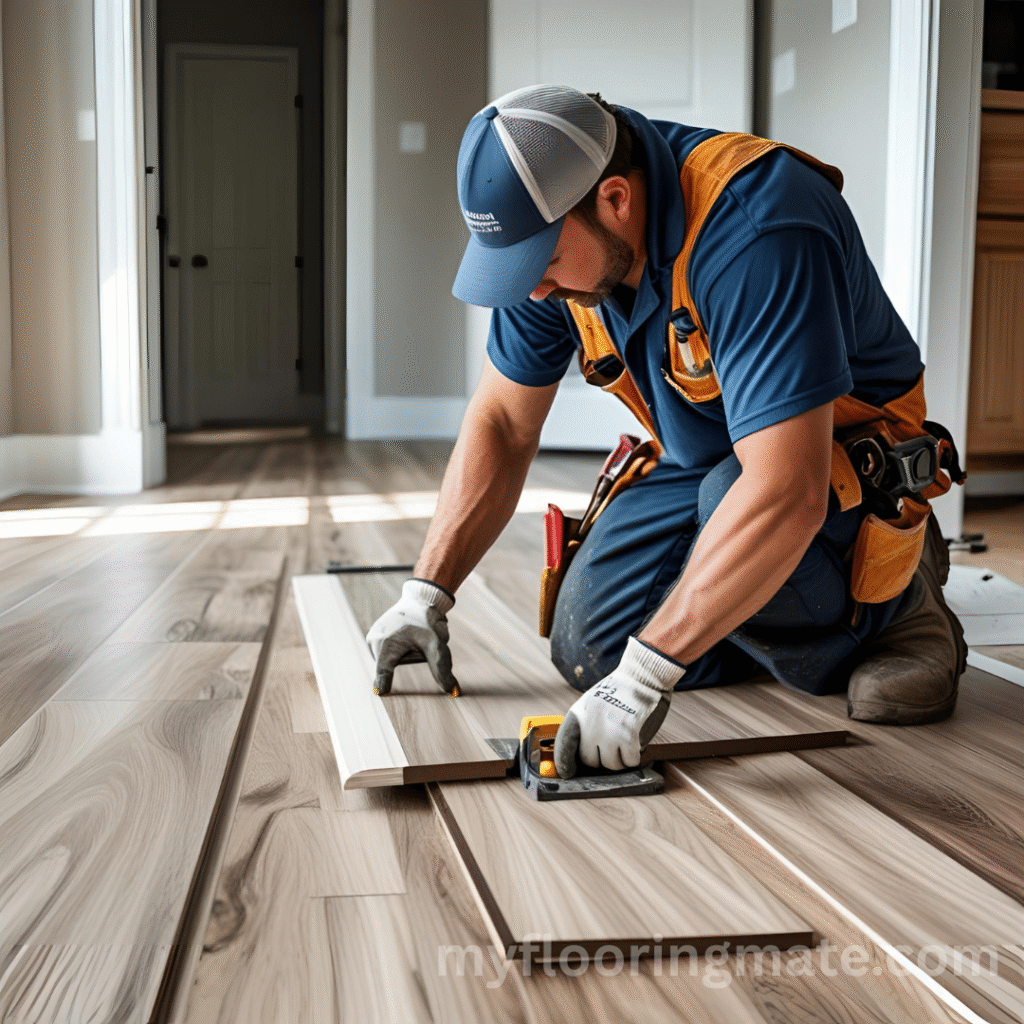
Even the best flooring can underperform if it’s not installed properly. A skilled flooring fitter ensures your new floor looks great, lasts longer, and performs as expected. Here’s how to choose the right professional for the job:
1. Look for Flooring-Specific Experience
Not all installers are the same. Make sure the person you hire has experience with the type of flooring you’re choosing — whether it’s laminate, vinyl, hardwood, carpet, or tiles. Ask to see photos of recent projects or case studies.
2. Check Reviews and Ratings
Search platforms like Checkatrade, Trustpilot, or Google Reviews to see what others say. Pay attention to installers who are consistently praised for professionalism, timeliness, and clean work.
3. Get Multiple Quotes
Don’t settle for the first price. Get at least three written quotes so you can compare not just the cost but also what’s included — materials, prep work, underlay, trims, and clean-up.
4. Ask About Insurance & Guarantees
Reputable flooring contractors should carry public liability insurance and offer some form of guarantee on their work. This protects you if anything goes wrong during or after installation.
5. Communication Is Key
Good installers will clearly explain timelines, what prep is needed, and how to care for your flooring afterwards. If someone is vague or difficult to reach before the job starts, it may be a red flag.
6. Aftercare Support
Some installers offer aftercare advice or follow-up support. This is especially useful for flooring types that need special maintenance, like hardwood or luxury vinyl.
Choosing the right flooring installer gives you peace of mind and helps your investment pay off in the long run. Take your time, ask questions, and don’t be afraid to shop around — it’s your home, after all.
Conclusion – Choosing the Right Flooring for Your Home
Flooring does more than just cover your floors — it defines the look, feel, and function of every room. Whether you’re after something practical, stylish, cosy, or eco-conscious, the right choice depends on your space, your lifestyle, and your budget.
Take your time to explore different types of flooring, compare pros and cons, and think about what suits each room best. Laminate and vinyl are great all-rounders, hardwood brings warmth and timeless charm, and carpet adds comfort where it matters most.
Don’t forget to factor in installation and maintenance. A professional installer makes a big difference in how your floor looks and performs over time.
In the end, the best flooring is the one that fits your home — and your daily life — just right.
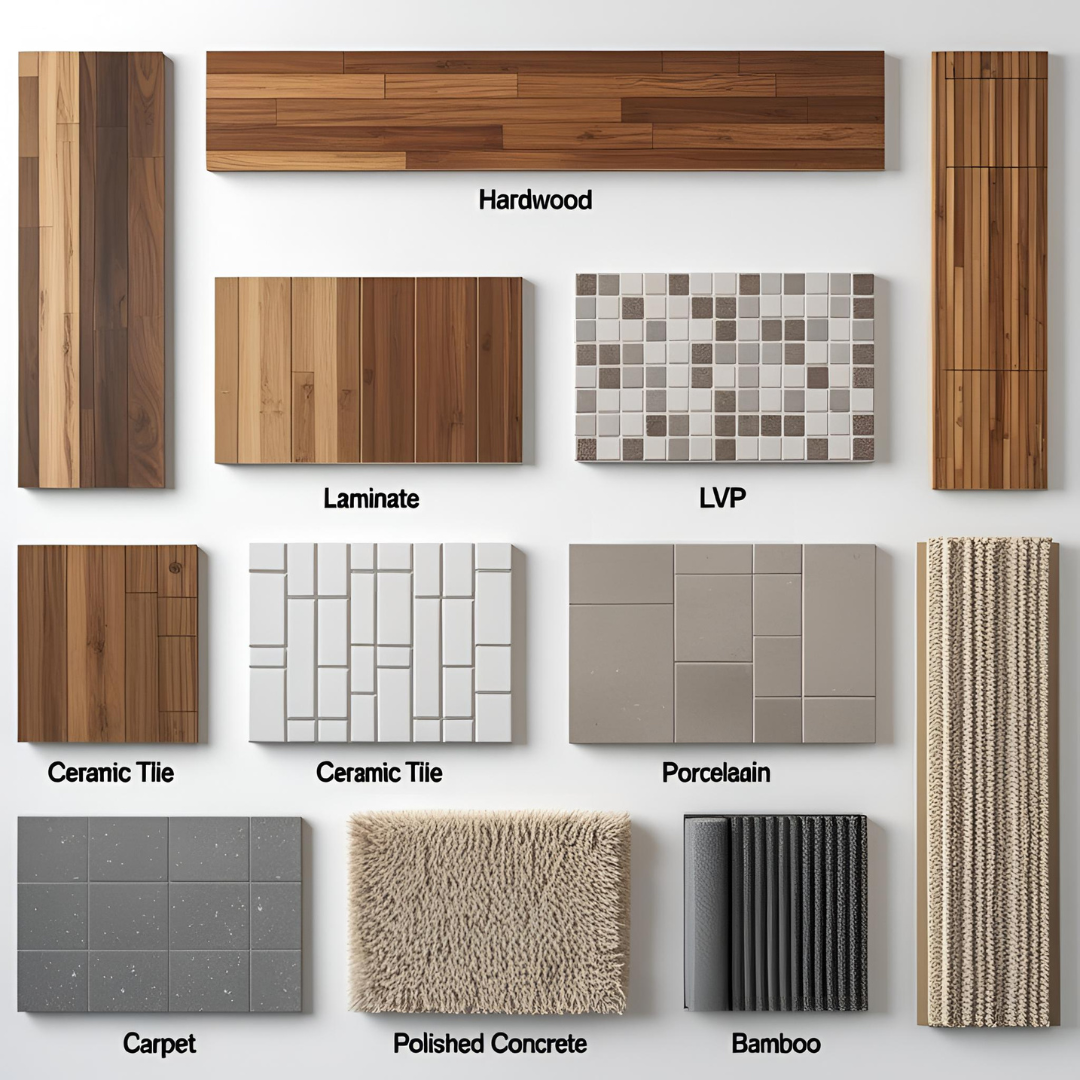
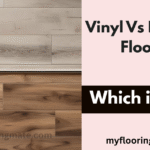
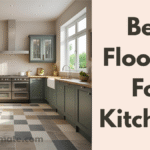
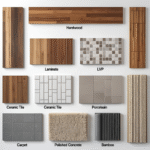
1 thought on “Types of Flooring: Best Options for UK Homes in 2025 (Full Guide)”